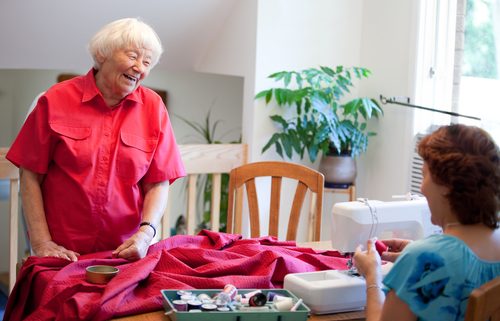Championing Independent Living for People with Disabilities
The baby boomer generation is aging. In fact, it is estimated that 20% of the American population will be 65 years and older by 2030. In addition to this, more individuals are also suffering from disabilities caused by aging and certain medical conditions, increasing the number of people in need of proper care and support.
Unfortunately for many individuals with disabilities, there are so many barriers that hinder them from living a full, normal life. Aside from dealing with the effects of their disabilities, these individuals also need to deal with barriers including a lack of ramped entrances, a lack of interpreters and a lack of the right materials to help people with visual impairment. But thanks to independent living, individuals with a disability can enjoy a good quality of life just like everyone else.
What is independent living?
Independent living means having the same opportunities to make decisions, pursue activities that one loves and do things that everyone else does.
Independent living doesn’t always mean living on your own. It means having the right to pursue one’s passions and having the freedom to fail and learn from one’s mistakes, as any non-disabled person would do.
Where did independent living start?
The concept of independent living started during the late 1960s when a group of people with disability took active roles in decisions affecting their lives. The movement followed the philosophy that disabled people know their needs best, so they should be the ones to identify barriers and gaps in the delivery of service for them. The first center or facility was formed in Berkeley, California in 1972 and centers in Houston and Boston were also built the same year.
What are the types of independent living facilities?
Seniors with disabilities can choose from a variety of independent living facilities:
- Continuing Care: These are communities that offer access to skilled nursing, assisting living, memory care, and independent living facilities. This enables residents to transfer from one facility to the other depending on their needs.
- Senior Apartments: This is the most common type of facility and offers services that include meals, transportation, and recreational activities.
- Housing Units: These are senior communities offering condominiums, duplexes, mobile homes, townhouses, and single-family homes, all of which are adjoined to an independent senior living community.
- Subsidized Housing: This is an option offered by the Department of Housing and Urban Development to low-income seniors who are in need of an independent living community.
Independent living is a huge step for people with disabilities, especially for seniors who need special care but would still want the freedom to live their lives the way they want to.
Choose Fallbrook Assisted Living and Memory Care
Thanks to independent living facilities and their staff, people with a disability already have more power to make decisions for themselves, do activities that they love, pursue their passions and live just like everyone else, all that while still getting the care and support they need. It also gives peace of mind to loved ones who want the best quality of life for family members with disabilities.
Fallbrook Assisted Living is proud to offer its services to Fremont, NE, and surrounding areas and cities: Arlington, Cedar Bluffs, Ames Nickerson, Fontanelle, Arlington, Leshara, Colon, and Hooper




